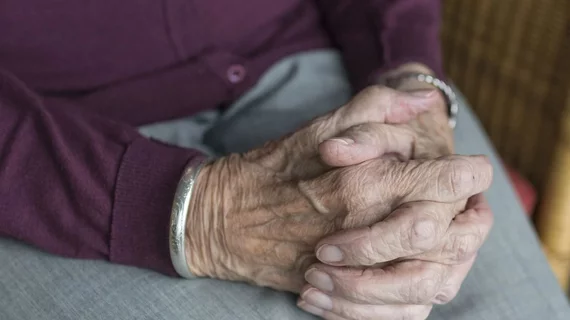Mobile x-ray program brings exams into nursing homes, benefiting dementia patients and providers
Dementia patients become easily distressed when taken out of their everyday environment for an imaging visit. But new research suggests bringing a mobile x-ray unit into the comfort of their own homes can greatly reduce such stress and confusion.
A Danish hospital implemented a pilot program in 2018, performing x-ray exams in nursing homes to study elderly patients’ behaviors and perspectives toward the experience. The project shortened the typical ordeal, including transport and wait times, from up to five hours down to 25 minutes.
Observations and interviews with these patients were overwhelmingly positive, underscoring the value of mobile imaging modalities, J.M. Jensen, with University College Lillebelt in Denmark, and colleagues wrote in Radiography.
“Overall the behavior and experience of the patients with dementia were positive during the mobile x-ray examinations in nursing homes,” they added Wednesday. “This study showed the patients' home was a recognizable, safe zone and being at home caused less interference with the normal everyday life, which benefitted the patients and helped them to stay calm and safe.”
Nearly 80% of those living in nursing homes suffer from dementia, with that figure only expected to increase in the coming years. Visits to the x-ray department are not only challenging for these people but for radiographers as well. Prior research has shown that the latter experience both verbal and physical aggression if patents feel their environment has been altered.
With this in mind, Jensen et al. included 23 patients who were referred for imaging between October and November 2018. Two individuals observed the x-ray exam with the everyday caregiver also present. Afterward, the observers completed six 10-20 minute interviews with the caregivers. As previously mentioned, overall feedback was positive, with four main themes identified.
1. Patients felt safe and calm in their known environment. All said this was significant to the process. One individual even sat in his chair with a hand on his table during the exam.
2. Most smiled, became happy and were curious during their x-ray. A number were also in pain, but remained calm and even joked in some instances. Observations noted that the first seconds of the exam were crucial to the entire process. A good first impression was also important.
3. Radiographers who collaborated with patients conducted a much smoother exam. Listening, understanding and talking with the individual according to their level of dementia led to a quicker visit.
4. Providers and patients had difficulties with both verbal and non-verbal communications. Slow and clear instructions did help patients understand what was happening and one radiographer who established body contact with individuals completed exams without conflict.
“Knowing that unfamiliar environments can trigger distress and be overwhelming for a patient with dementia, the findings indicate that mobile x-ray examinations are beneficial for patients living in nursing homes,” the authors concluded.

